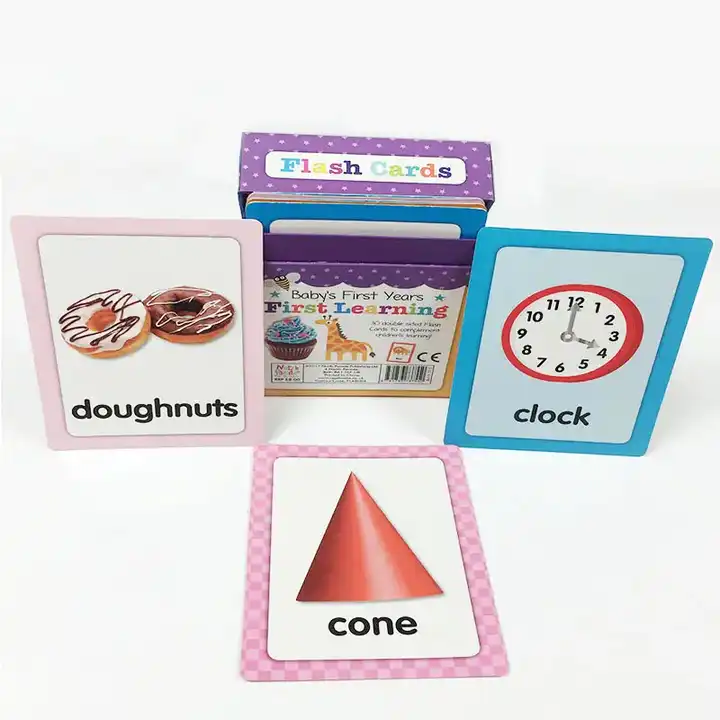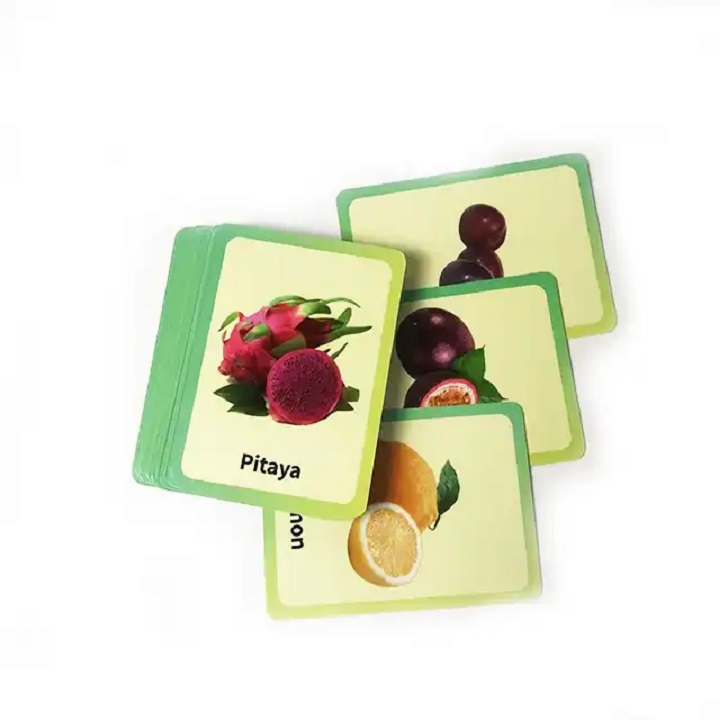Content Menu
● Understanding the Benefits of Flashcards
● Planning Your Flashcards
● Creating Physical Flashcards
● Creating Digital Flashcards
● Tips for Effective Flashcard Design
● Studying with Flashcards
● Flashcard Applications Across Disciplines
● Overcoming Common Flashcard Challenges
● Conclusion
● Frequently Asked Questions
>> 1. What is the ideal size for a flashcard?
>> 2. Should I use physical or digital flashcards?
>> 3. How often should I review my flashcards?
>> 4. What should I do if I'm struggling to remember the information on a flashcard?
>> 5. Can flashcards be used for all subjects?
● Citations:
Flashcards are a versatile and effective study tool that can be used to memorize and review information across various subjects. Whether you're a student preparing for exams, a language learner expanding your vocabulary, or a professional seeking to master new concepts, flashcards can be tailored to suit your specific needs. This guide provides a detailed, step-by-step approach to creating flashcards that maximize learning and retention.

Understanding the Benefits of Flashcards
Flashcards offer several advantages as a study aid:
- Active Recall: Flashcards promote active recall, a learning technique that involves retrieving information from memory rather than passively rereading notes. Active recall strengthens memory connections and improves long-term retention[7].
- Spaced Repetition: Flashcards can be easily used with spaced repetition systems (SRS), which involve reviewing cards at increasing intervals. SRS algorithms optimize review schedules to reinforce learning just before information is likely to be forgotten, maximizing efficiency[3].
- Portability and Convenience: Flashcards are compact and portable, making them ideal for studying on the go. They can be used during commutes, breaks, or any spare moment, allowing for consistent review and reinforcement[3].
- Customization: Flashcards can be customized to suit individual learning styles and preferences. They can incorporate text, images, diagrams, and other visual aids to enhance understanding and memorization[1].
Planning Your Flashcards
Before diving into the creation process, it's essential to plan your flashcards effectively:
1. Identify Key Concepts: Begin by identifying the core concepts, terms, or facts that you need to learn. Review your course materials, textbooks, or other resources to pinpoint the most important information[3].
2. Break Down Complex Topics: If you're dealing with complex topics, break them down into smaller, more manageable chunks. This will make it easier to create concise and focused flashcards[3].
3. Determine Flashcard Format: Decide on the format of your flashcards. Will you use physical cards or digital flashcards? What size and layout will you use? Consider the amount of information you need to include on each card and your personal preferences[1].
4. Gather Materials: Gather the necessary materials for creating your flashcards. This may include index cards, pens, markers, scissors, and a storage container for physical cards. For digital flashcards, you'll need a computer or mobile device and access to a flashcard app or software[5].
Creating Physical Flashcards
Creating physical flashcards is a straightforward process that allows for tactile engagement and customization:
1. Prepare Your Index Cards: Start by preparing your index cards. You can use standard-sized index cards or cut larger sheets of paper into smaller rectangles[1].
2. Write the Question or Term: On one side of the card, write the question, term, or concept that you want to learn. Use clear and concise language, and make sure the text is legible[3].
3. Write the Answer or Definition: On the other side of the card, write the answer, definition, or explanation corresponding to the question or term. Be thorough and accurate, but avoid including unnecessary details[3].
4. Add Visual Aids (Optional): If appropriate, add visual aids such as diagrams, images, or charts to enhance understanding and memorization. Visual cues can be particularly helpful for visual learners[1].
5. Use Colors and Formatting: Use colors and formatting to highlight key information and make your flashcards more engaging. You can use different colored pens or markers to emphasize important words or phrases[1].
6. Maintain Consistency: Maintain consistency in your flashcard design. Use the same font, size, and layout for all your cards to create a cohesive and organized study tool[1].
Creating Digital Flashcards
Digital flashcards offer several advantages over physical cards, including portability, searchability, and the ability to incorporate multimedia elements:
1. Choose a Flashcard App or Software: Select a flashcard app or software that meets your needs. Popular options include Anki, Quizlet, and Brainscape. These tools offer features such as spaced repetition, multimedia support, and collaboration[8].
2. Create a New Deck: Create a new deck or set of flashcards within your chosen app or software. Give your deck a descriptive name that reflects the subject matter[5].
3. Add Cards: Add cards to your deck one by one. For each card, enter the question or term on one side and the answer or definition on the other side[5].
4. Incorporate Multimedia: Take advantage of digital flashcards' ability to incorporate multimedia elements. Add images, audio clips, or videos to your cards to enhance understanding and engagement[1].
5. Customize Formatting: Customize the formatting of your flashcards to improve readability and visual appeal. Adjust the font, size, color, and layout to suit your preferences[1].
6. Organize and Tag Cards: Organize your cards into categories or subcategories to facilitate navigation and review. Add tags or keywords to your cards to make them searchable[5].

Tips for Effective Flashcard Design
To maximize the effectiveness of your flashcards, consider the following design tips:
- Keep It Concise: Flashcards should be concise and focused. Avoid including too much information on a single card. Aim for a single question or term on one side and a brief answer or definition on the other side[7].
- Use Active Voice: Use active voice whenever possible to make your flashcards more engaging and easier to understand. Active voice is more direct and concise than passive voice[1].
- Ask Questions: Frame your flashcards as questions rather than statements. This will encourage active recall and help you test your knowledge more effectively[3].
- Include Examples: Include examples to illustrate concepts and make them more concrete. Examples can help you understand how to apply the information you're learning[3].
- Use Mnemonics: Use mnemonics or memory aids to help you remember difficult or abstract concepts. Mnemonics can be acronyms, rhymes, or other memorable associations[3].
- Vary Question Types: Vary the types of questions you ask on your flashcards. Include multiple-choice questions, fill-in-the-blank questions, and short-answer questions to test your knowledge in different ways[1].
Studying with Flashcards
Creating flashcards is only half the battle. To reap the full benefits, you need to use them effectively:
1. Review Regularly: Review your flashcards regularly to reinforce learning and prevent forgetting. Schedule dedicated study sessions and stick to your schedule[3].
2. Use Spaced Repetition: Implement a spaced repetition system (SRS) to optimize your review schedule. SRS algorithms automatically adjust the intervals between reviews based on your performance[3].
3. Shuffle Your Cards: Shuffle your cards before each study session to prevent rote memorization. This will force you to actively recall the information rather than relying on the order of the cards[3].
4. Test Yourself: Test yourself frequently using your flashcards. Cover the answer side of the card and try to recall the answer from memory. If you can't recall the answer, review the card and try again later[7].
5. Track Your Progress: Track your progress to identify areas where you need to focus your efforts. Keep a record of the cards you've mastered and the cards you're still struggling with[3].
6. Revise and Update: Revise and update your flashcards as needed. As you learn more about a topic, you may need to add new cards, modify existing cards, or remove cards that are no longer relevant[1].
Flashcard Applications Across Disciplines
The versatility of flashcards makes them applicable across a wide range of disciplines:
- Language Learning: Flashcards are excellent for learning vocabulary, grammar rules, and verb conjugations in a new language. Create cards with the foreign word on one side and the English translation on the other[3].
- Science: Flashcards can be used to memorize scientific terms, formulas, and concepts. Include diagrams and illustrations to enhance understanding[1].
- History: Flashcards are helpful for memorizing historical events, dates, and figures. Create timelines and use visual aids to organize information[1].
- Mathematics: Flashcards can be used to practice math facts, formulas, and problem-solving techniques. Include examples and step-by-step solutions[3].
- Medicine: Flashcards are essential for medical students to memorize anatomical structures, physiological processes, and pharmacological information. Use diagrams and clinical scenarios to enhance learning[1].
Overcoming Common Flashcard Challenges
While flashcards are generally effective, some learners may encounter challenges:
- Creating Too Many Cards: Avoid creating an overwhelming number of flashcards. Focus on the most important concepts and prioritize quality over quantity[7].
- Including Too Much Information: Keep your flashcards concise and focused. Avoid including too much information on a single card[7].
- Relying on Rote Memorization: Don't rely solely on rote memorization. Focus on understanding the underlying concepts and making connections between ideas[3].
- Failing to Review Regularly: Review your flashcards regularly to reinforce learning and prevent forgetting. Schedule dedicated study sessions and stick to your schedule[3].
- Using Flashcards Passively: Use flashcards actively by testing yourself and trying to recall the information from memory. Avoid simply reading the cards passively[7].
Conclusion
Flashcards are a powerful tool for learning and memorization. By following the steps outlined in this guide, you can create effective flashcards that suit your individual learning style and needs. Whether you're a student, a professional, or a lifelong learner, flashcards can help you master new concepts, retain information, and achieve your goals. Remember to plan your flashcards carefully, design them effectively, and use them consistently to maximize their benefits.

Frequently Asked Questions
1. What is the ideal size for a flashcard?
The ideal size for a flashcard depends on the amount of information you need to include and your personal preferences. Standard index cards (3x5 inches) are a popular choice, but you can also use larger or smaller sizes as needed[1].
2. Should I use physical or digital flashcards?
The choice between physical and digital flashcards depends on your learning style and preferences. Physical flashcards offer a tactile experience and can be easily customized, while digital flashcards offer portability, searchability, and multimedia support[1].
3. How often should I review my flashcards?
You should review your flashcards regularly to reinforce learning and prevent forgetting. Implement a spaced repetition system (SRS) to optimize your review schedule[3].
4. What should I do if I'm struggling to remember the information on a flashcard?
If you're struggling to remember the information on a flashcard, review the card carefully and try to make connections to other concepts or examples. You can also use mnemonics or memory aids to help you remember the information[3].
5. Can flashcards be used for all subjects?
Flashcards can be used for a wide range of subjects, including language learning, science, history, mathematics, and medicine. The key is to adapt the flashcard format and content to suit the specific subject matter[1].
Citations:
[1] https://create.microsoft.com/en-us/learn/articles/create-printable-flashcards-word
[2] https://github.com/skywind3000/skywind/blob/master/index.xml
[3] https://flashcardsandstationery.com/how-to-make-flashcards-step-by-step/
[4] https://lianxiaozhuang.oss-cn-beijing.aliyuncs.com/xz1024/pdf/%E7%99%BD%E5%B8%BD%E5%AD%90%E8%AE%B2web%E5%AE%89%E5%85%A8/%E7%99%BD%E5%B8%BD%E5%AD%90%E8%AE%B2web%E5%AE%89%E5%85%A8.pdf
[5] https://www.canva.com/create/flashcards/
[6] https://www.cnblogs.com/apachecn/p/18462315
[7] https://www.youtube.com/watch?v=47yVbdReyXw
[8] https://quizlet.com/features/flashcards
































